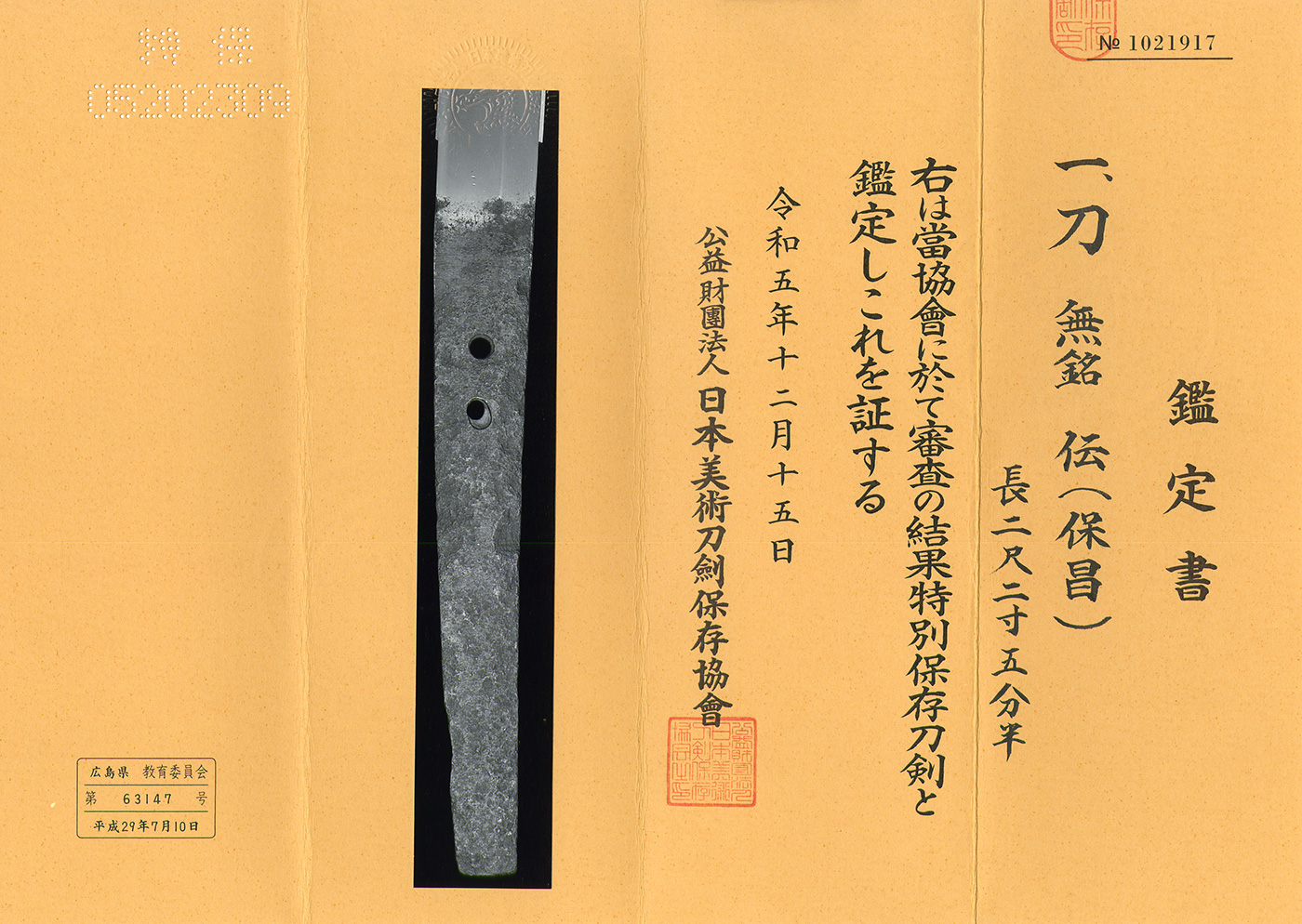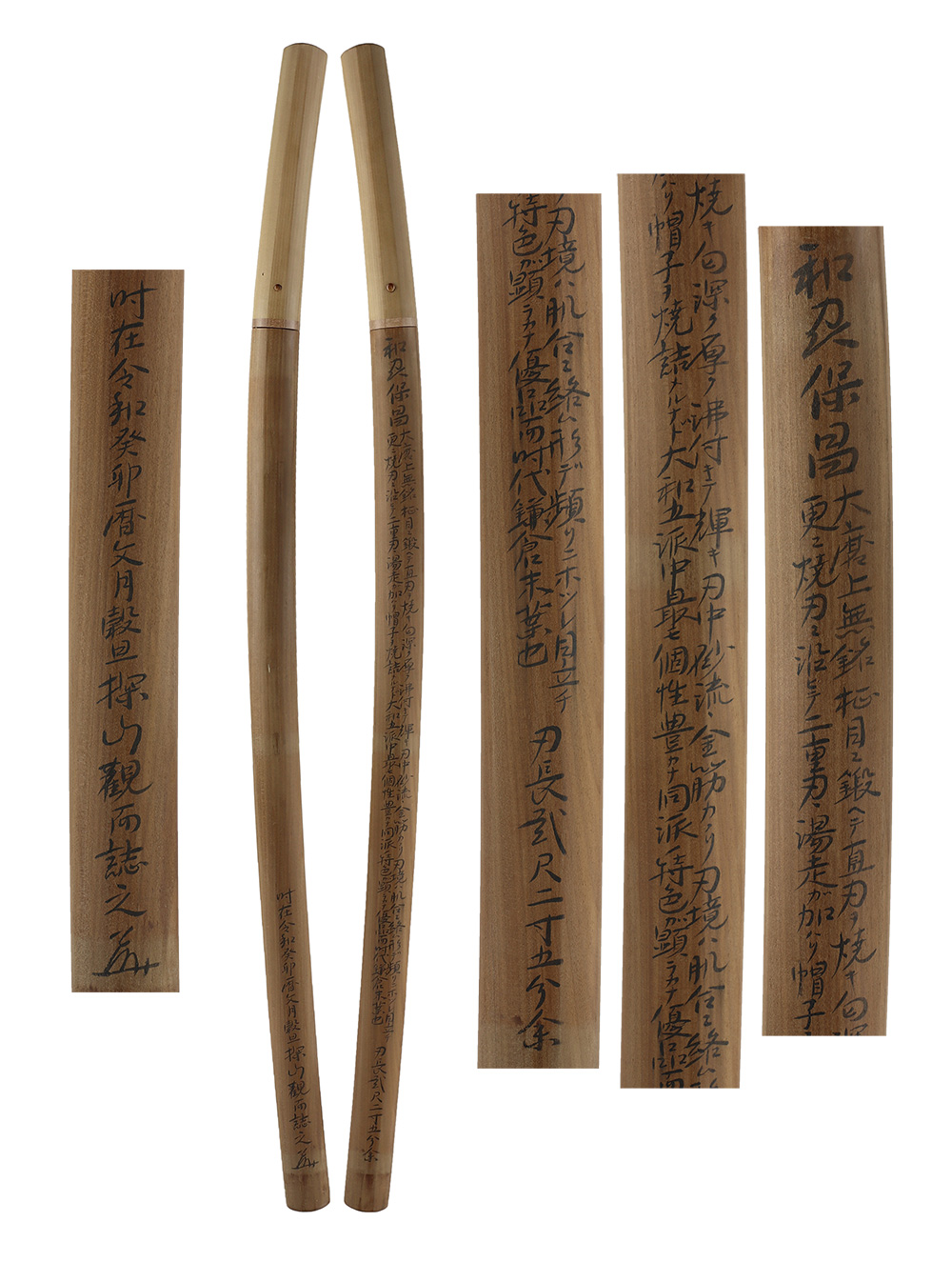Ordering number:23824
Katana in Shirasaya with Koshirae (NBTHK Tokubetsu Hozon Token)
Signature: Mumei (attributed to Den Hosho).
無銘(伝 保昌)
Sayagaki: "Attributed to Hosho of Yamato Province. Greatly shortened, unsigned, forged with a straight temper line, deep and thick nioi with nie and kinsuji, with sunagashi and nie-deki in the blade. Unique characteristics of the Yamato Five Schools, especially prominent in this piece. Era: Late Kamakura period. Blade Length: approximately 2 shaku 2 sun 5 bu (68.2 cm). Written in July of Reiwa by Tanzan Kansho." 2023
We divide 4 sections for each sword as Saijyo Saku, Jyojyo Saku, Jyo Saku, and Regular Saku.
This work is ranked as Jyo Saku for Mumei (attributed to Hosho).
Habaki: Single silver foil.
Blade Length: 69.3 cm (27.28 in)
Curvature: 1.6 cm (0.63 in)
Mekugi Holes: 2
Width at Base: 2.82 cm (1.11 in)
Width at Tip: 1.7 cm (0.67 in)
Thickness: 0.6 cm (0.24 in)
Sword Weight: 650 grams.
Era: Late Kamakura period.
Shape: A greatly shortened unsigned piece with a deep curvature, having a regular width and thickness.
Jigane: Well-forged masame-hada.
Hamon: Niedeki, Suguha Hamon. Deep and thick nioi with nie and sunagashi, with prominent kinsuji and yubashiri.
Features: Although the sword is unsigned, it is attributed to Hosho and comes with a highly regarded sayagaki by Tanobe sensei. This is a rare and excellent piece. The masame-hada forging is superior, showcasing the characteristics of the ancient swords, which are unparalleled by the new swords of the Edo period. The activities in the hamon, such as sunagashi, kinsuji, and yubashiri, are remarkably active.
Koshirae:
Tsuba: Shakudo tsuba with intricate carvings.
Saya: Black lacquered saya.
Fuchikashira: Shakudo nanako-ji with gold and silver inlays of chrysanthemum flowers.
Menuki: Shakudo with high-relief carvings of chrysanthemum flowers with gold inlays.
Aoi Art’s Comment: The sayagaki by Tanobe sensei gives this piece a high evaluation. Indeed, works by Hosho are exceedingly rare. While masame forging was often seen in the new swords of the Edo period by smiths like Kuninaga, it cannot match the appearance of old swords. The activities within the hamon, such as sunagashi, kinsuji, and yubashiri, are remarkably active and impressive.
Historical Background: The Yamato Five Schools include Hosho, Taima, Shikkake, Senjuin, and Tegai, each with unique characteristics that make their works timeless and captivating. This piece by Hosho is highly recommended.
NBTHK Tokubetsu Hozon Token.
Aoi Art estimation paper.
Whole Oshigata.
*The steins on the Habaki can be cleaned by an eraser.
Order Form
Related Items:
 Daisho Set: Hasedo Junin Kanbayashi Tsunehira Saku
Daisho Set: Hasedo Junin Kanbayashi Tsunehira Saku
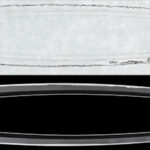 Tachi : Ichi(judged as Yoshioka Ichimonji)(NBTHK the 41st Juyo Token)
Tachi : Ichi(judged as Yoshioka Ichimonji)(NBTHK the 41st Juyo Token)
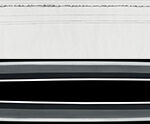 Katana: Naniwa ju Gassan Unryushi Sadakazu Kitae (Kokuin) (NBTHK Tokubetsu Hozon Token) (NBTHK Tokubetsu Kicho Token)
Katana: Naniwa ju Gassan Unryushi Sadakazu Kitae (Kokuin) (NBTHK Tokubetsu Hozon Token) (NBTHK Tokubetsu Kicho Token)
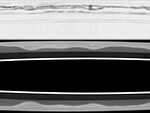 Katana:Kashu Ju Fujiwara Takahira(Takahira 2nd)(NBTHK Tokubetsu Hozon Token)(NBTHK Tokubetsu Kicho Token)
Katana:Kashu Ju Fujiwara Takahira(Takahira 2nd)(NBTHK Tokubetsu Hozon Token)(NBTHK Tokubetsu Kicho Token)
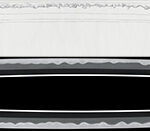 Katana:Chikuzen Kami Nobuhide(NBTHK Tokubetsu Hozon Token)
Katana:Chikuzen Kami Nobuhide(NBTHK Tokubetsu Hozon Token)
 Katana: (Red Inscription) Yamato Kanenaga Hon’ami (Kao) (Koson)(50th NBTHK Juyo Token) (Orikami) (Consignment Sale)
Katana: (Red Inscription) Yamato Kanenaga Hon’ami (Kao) (Koson)(50th NBTHK Juyo Token) (Orikami) (Consignment Sale)




